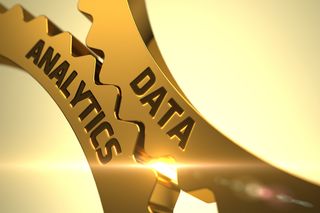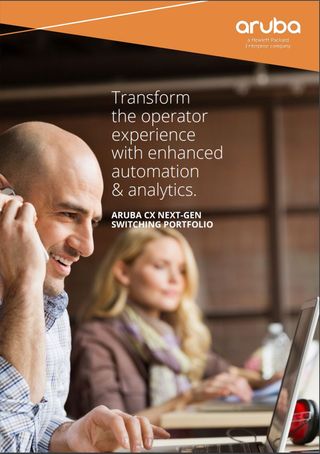What is data analytics?
Data is just data, but with analytics it becomes actionable information

Organisations are becoming more data-driven - based on the recognition that the information a business holds about its products, services, customers and employees is one of its most valuable assets. As such, data analytics can be used to help firms understand their business and make better decisions.
But what is data analytics? This might seem like a simple question, but it's still one worth exploring. In one sense, it is the study of data sets in order to reach conclusions about the information held within. This is being done more and more with purpose-built systems.
While data analytics can be used by organisations to allow them to make better informed decisions, it can also be used by academics to study scientific simulations, theories and hypotheses. One use case could be applying an algorithm to a data set to look for trends that could aid a business decision.
Unlike big data analytics, which starts with high volume raw data and needs specialist information processing to gain insights, data analytics focuses on what the analyst already knows, and what conclusions they can draw from existing data sets.
It can also refer to the qualitative and quantitative methods and procedures used to improve productivity, identify strengths and weaknesses, streamline internal processes, and cut costs. Data can be extracted and classified to identify and analyse data and patterns, and practices vary according to business requirements.
Changing data enables methodical decision-making. For example, social networking websites can gather data on user preferences, interests and divide them according to criteria, such as age, gender or location. Thorough analysis can expose important user and customer developments and enables the social network's configuration of content, layout and general strategy.
The term can also refer to the applications used to process data into actionable information. This can range from business intelligence to reporting and online analytical processing.
Get the ITPro. daily newsletter
Receive our latest news, industry updates, featured resources and more. Sign up today to receive our FREE report on AI cyber crime & security - newly updated for 2024.
Data analytics is somewhat comparable to business analytics, although the latter is concerned with to business uses, while data analytics has a wider emphasis.

Transform the operator experience with enhanced automation & analytics
Bring networking into the digital era
Types of data analytics methodologies
Data analytics can be divided into two types; exploratory data analysis (EDA) and confirmatory data analysis (CDA). The former looks to discover patterns and relationships in data, while the latter uses statistical techniques to verify hypotheses about a dataset.
Data analysis can also be delineated into quantitative data analysis and qualitative data analysis. Quantitative data analysis looks at numerical data with quantifiable variables that can be statistically compared or measured. The latter attempts to examine the meaningful and symbolic content of data, such as text, images, audio and video.
Advanced forms of data analytics
There are more advanced forms of data analytics, such as data mining. This involves sorting through data sets to identify trends, patterns and relationships. Text mining offers a way of analysing text-based documents or messages.
Descriptive and diagnostic analytics look back at existing data and draw out trends or diagnose potential issues, such as whether an event impacted sales or how effective a marketing campaign was.
Predictive analytics looks to forecast equipment failures or customer behavioural trends. Prescriptive analytics goes beyond this and focuses on the course of action to take if certain events are forecast.
Processes and methods of data analytics
More of the work in data analytics occurs in the collection, preparation, and integration of data. Then there is the developing, testing and revision of analytical models to ensure the production of precise results.
The process starts with data collection where data scientists ascertain the data they need for a specific analytics application. Data from various sources may be brought together and turned into a common format and uploaded into an analytics system, such as a data warehouse, Hadoop cluster or database.
Once data is ready, any quality problems need to be fixed as this could affect the veracity of analytics applications. More data preparation work is carried out to organise data for analytics.
Finally, after a model is tested and revised, it is put into production mode with a full data set, so that data can address a specific problem.

Transform the operator experience with enhanced automation & analytics
Bring networking into the digital era
The future of data analytics
Innovations and prevailing trends such as the proliferation of IoT have greatly accelerated the data capture process. However, due to data quality issues and a lack of resources, organisations still struggle to reap all the possible benefits.
Traditionally, the limitations of core legacy IT infrastructure restrained data analytical capabilities. The more fragmented the technology, the less applications and data can meld together. As a result, demand is growing for tools that can create seamless links across multiple data sources, enabling a homogenous data strategy.
That's where cloud technology comes in. Like for many aspects of IT, the cloud is transforming data analytics, enabling tools to draw from a multitude of data sources hosted off-premise. The cloud however, is of little use if advancements are not made to analytcial tools themselves. Fortunately, progress is visible when considering that initially, data analytics supported the decision-making process, but tools are now increasingly capable of making better decisions on their own. Expect this two-pronged approach to continue its current trajectory.
Still, we are only at the beginning of the data-age. With so many possibilities, it's difficult to foresee exactly which direction data analytics will steer. Though over time, it's likely that tools will develop somewhat paradoxically to solve the data quality issues which are presently restricting their use. And, as with many areas, current professions in the sector may gradually become obsolete. These endings are reasonably concrete, though around them the sky is the limit.




